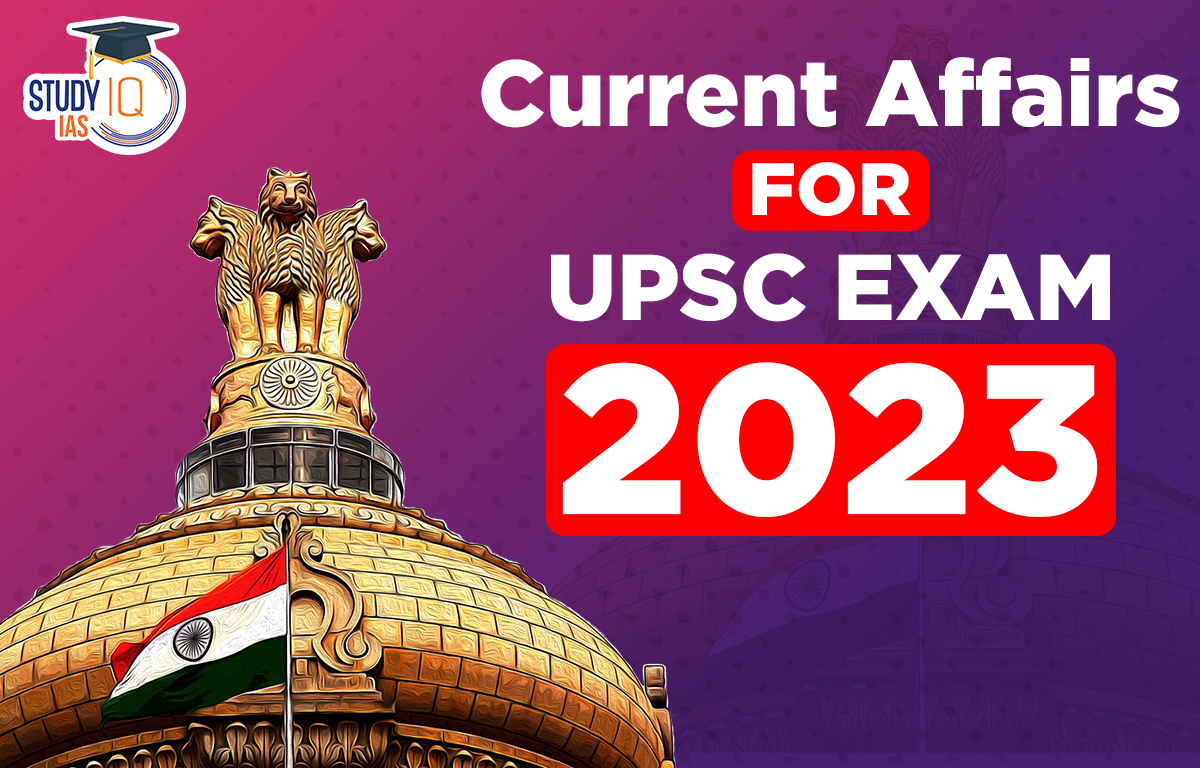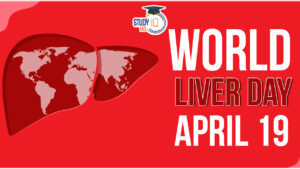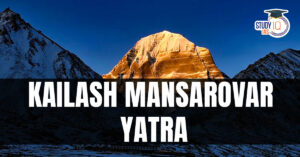Current Affairs 22nd April 2023 for UPSC Prelims Exam
Zombie Banks
Context: Recent study shows that Zombie banks account for 16% of state-owned banks’ equity, 23% of non-performing loans and 18% of their lending portfolio within the country.
About Zombie Banks
- Zombie bank is a bank that is practically insolvent but continues to exist through hiding bad loans on their balance sheet.
- The bank can continue its operations by rolling over bad loans instead of writing them off. This process is called as forbearance lending or zombie lending.
- Factors that help the zombie banks to continue their business under three groups:
- Fiscal means ( via subsidies or tax concessions and government sponsored capitalisation);
- Indirect support ( by easing competition for the organisation through administrative restrictions on competitors); and
- Credit provided to the institution.
Zombie Firms
- According to RBI, zombies are perpetually loss-making firms that eat away precious monetary and financial resources.
- They cannot service debt but still manage to borrow more to survive.
History of Zombie banks
- Appearance of zombie banking traces back to the Japanese banking crisis of 1990s.
- Later, zombie banking returned with the global financial crisis with several banks being allowed to live without health in the US and Western Europe. Governments supported many such banks with money, and they came back.
Impact of Zombie banks
- Zombies create ill effects on the rest of the economy.
- The BIS (Bank for International Settlement), observes that zombies are less productive.
- They crowd out (depresses) growth of the more productive firms by locking money (so-called “congestion effects”) in inefficient firms (loans not returned).
- Non-treatment of zombie banks will produce bigger financial catastrophe as banks are extending risk and continue to give loans to failed businesses.
Current Affairs 21st April 2023 for UPSC Prelims Exam
Olive Ridley Turtles
Context: Recently, millions of baby olive ridley sea turtles crawled towards the sea after emerging from eggs along Odisha’s Rushikulya beach.
About Olive Ridley Turtles
- They are the second-smallest and most abundant of all sea turtles found in the world.
- They are mostly found in the warm and tropical waters of Pacific and Indian Oceans, but can also be found in the warm waters of the Atlantic Ocean.
- Food: Mainly shrimp, crab, molluscs, fish and crabs.
- Nesting: They are known for their unique mass nesting called Arribada (which means ‘arrival by the sea’ in Spanish), where thousands of females come together on the same beach to lay eggs.
- They hatch in 45 to 60 days.
- Conservation Status:
- IUCN Red List: Vulnerable
- Schedule I of Indian Wildlife (Protection) Act, 1972
- CITES Appendix I
- Nesting sites: Gahirmatha marine sanctuary in Odisha is considered the world’s largest nesting beach for Olive Ridleys.
- The Rushikulya river mouth is considered the second-biggest nesting site for Olive Ridley Turtles in India.
- Operation Olivia: Every year, the Indian Coast Guard’s “Operation Olivia”, initiated in the early 1980s, helps protect Olive Ridley turtles as they congregate along the Odisha coast for breeding.

Satkosia Wildlife Sanctuary
Context: Indian Skimmers have been recorded for the first time in Satkosia wildlife sanctuary.
About Satkosia Gorge Wildlife Sanctuary
- It was created in 1976, with an area of 796 km.
- Satkosia spreads along the magnificent gorge over the mighty river Mahanadi in Odisha.
- The name Satkosia originates from two words; sat meaning seven and kos meaning two miles, indicating the length of the gorge as 14 miles or 22 km.
- It is one of the best ecosystems in the country, representing a diverse floral and faunal extravaganza.
- Fauna: It is known for Gharials, Mugger crocodile and rare freshwater turtles like Chitra indica and Indian softshell turtle.
- Protection: The area was declared as Satkosia Tiger Reserve in 2007, comprising two adjoining wildlife sanctuaries; the Satkosia Gorge sanctuary and Baisipalli sanctuary.
About Indian Skimmer
- It is native to India, Bangladesh, Myanmar, Nepal, Pakistan and Vietnam.
- Indian skimmer is found in the coastal estuaries of western and eastern India.
- IUCN Status: Endangered
- Recent surveys estimate the population of Skimmers in Bangladesh and India at just 3,000 to 3,500 respectively.

Critical Minerals
Context: A national critical minerals strategy for India can help focus on priority concerns in supply risks, domestic policy regimes, and sustainability.
What are Critical Minerals?
- Critical Minerals: A critical mineral is a metallic or non-metallic element that has two characteristics:
- It is essential for the functioning of our modern technologies, economies or national security
- There is a risk that its supply chains could be disrupted.
- Uses: Critical minerals such as copper, lithium, nickel, cobalt are essential components in many of today’s rapidly growing clean energy technologies – from wind turbines and electricity networks to electric vehicles.
- Demand for these minerals will grow quickly as clean energy transitions gather pace.
- Critical Minerals in India: Minerals such as antimony, cobalt, gallium, graphite, lithium, nickel, niobium, and strontium are among the 22 assessed to be critical for India.
- Many of these are required to meet the manufacturing needs of green technologies, high-tech equipment, aviation, and national defence.
- Challenges:
- Lack of Exploration in India: On the domestic front, while India has a geological potential similar to mining-rich Western Australia, much still needs to be explored.
- Many critical and strategic minerals constitute part of the list of atomic minerals in the Mines and Minerals (Development and Regulation) (MMDR) Act, 1957.
- The present policy regime reserves these minerals only for public sector undertakings.
- Less Export:
- China is the most dominant player in the critical mineral supply chains, still struggles with Covid-19-related lockdowns.
- As a result, the extraction, processing and exports of critical minerals are at risk of slowdown.
- Russia- Ukraine War: Russia is one of the significant producers of nickel, palladium, titanium sponge metal, and the rare earth element scandium.
- Ukraine is one of the major producers of titanium. It also has reserves of lithium, cobalt, graphite, and rare earth elements, including tantalum, niobium, and beryllium.
- The war between the two countries has implications for these critical mineral supply chains.
- Shifting Balance of Power: As the balance of power shifts across continents and countries, the critical mineral supply chains may get affected due to the strategic partnership between China and Russia.
- Lack of Exploration in India: On the domestic front, while India has a geological potential similar to mining-rich Western Australia, much still needs to be explored.
- Potential Solution for India:
- Need for New List in MMDR Act: Given the increasing importance of critical and strategic minerals, there is an imperative need to create a new list of such minerals in the MMDR Act.
- Exploration needs to be Encouraged: The exploration of minerals must be encouraged, with particular attention given to deep-seated minerals.
- Bilateral Agreements: India must actively engage in bilateral and plurilateral arrangements for building assured and resilient critical mineral supply chains.
- Critical Minerals Strategy for India: India requires a critical minerals strategy comprising measures aimed at making the country Aatma Nirbhar (self-reliant) in critical minerals needed for sustainable economic growth.

Small Savings Instruments
Context: The returns on Small Savings Instruments (SSI) schemes are still significantly lower than what they should have fetched as per the formula adopted for them.
About Small Savings Instruments:
- Small savings instruments are type of investments that help individuals achieve their financial goals over a particular period. They are managed by central government.
- Money collected from small savings instruments are credited to the National Small Savings Fund (NSSF).
- SSI schemes are mainly classified into three parts:
- Social security schemes: They include Sukanya Samriddhi Scheme, Public Provident Fund (PPF) and Senior Citizens‘ Savings Scheme (SCSS).
- Savings certificate: It includes National Small Savings Certificate (NSC) and Kisan Vikas Patra (KVP).
- Postal Deposits: It comprises of various savings account, recurring deposits, time deposits of varying maturities and monthly income scheme.
- Interest rates: The interest rates are announced quarterly and based on yields of government securities of corresponding maturity.
- Shyamala Gopinath panel (2010) had suggested a market-linked interest rate system for small savings schemes.
- Benefits of Small Savings Schemes:
- They provide higher returns than bank fixed deposits apart from a sovereign guarantee and tax benefits.
- They have very low risk
- They offer an alternative investment option for households.
Major Small Savings Schemes:
| Scheme | Description |
| Kisan Vikas Patra (KVP) | KVP has a minimum deposit limit of Rs. 1000 and in multiple of Rs. 100 therein; no maximum limit has been imposed.
KVP can be purchased from Post Office. The maturity period depends on the time prescribed by the Ministry of Finance from time to time. |
| National Small Savings Certificate (NSC) | NSC has a minimum deposit limit of Rs. 1000 and in multiple of Rs. 100 therein; no maximum limit has been imposed.
NSC has a maximum maturity period of 5 years from the date of deposit. |
| Sukanya Samriddhi Scheme | Sukanya Samriddhi Yojana is aimed at the betterment of girl child in India.
An account in the name of the girl child can be opened across any of the private and public sector banks. Working: Parents/guardians can invest a minimum of Rs 1,000 and up to Rs 1.5 lakh every year in this account. The initial minimum deposit must be Rs 250. Deposits can only be made for the first 15 years after opening the account. The girl child has to be under 10 years at the time of account opening. The account will be operational till the age of 21. |
| Public Provident Fund (PPF) | PPF has a maturity period of 15 years from the data of opening.
PPF has a minimum deposit Rs. 500 and the maximum deposit of Rs. 1.50 lakh in a financial year. Investor has facility of loan from 3rd financial year up to 6th financial year. Withdrawal is permissible every year after the 7th year. |
| Senior Citizens‘ Savings Scheme (SCSS) | SCSS has a minimum deposit of Rs 1000/- & in the multiples thereof with maximum limit being Rs 30 lakh.
Individual must have attained 60 years at the date of opening the account or must have been more than 55 years but less than 60 and has retired under Superannuation, VRS or Special VRS, can open an account. The scheme matures after 5 years of opening but can be extended by further 3 years. |
Pradhan Mantri Awas Yojna-Gramin (PMAY-G)
Context: Recently, the Bihar government has served notices to over 2.21 lakh beneficiaries for not completing the construction of their houses under the Pradhan Mantri Awas Yojna-Gramin (PMAY-G).
About Pradhan Mantri Awas Yojna-Gramin (PMAY-G)
- PMAY-G aims to provide a pucca house with basic amenities to all rural families, who are homeless or living in kutcha or dilapidated houses by the end of March 2022 (Now by the end of March 2024).
- Its objective is to offer aid in the form of complete grants to individuals living in rural areas and classified as Below the Poverty Line (BPL), for the construction of new houses or the renovation of existing unserviceable kutcha houses.
- The minimum area or size of the housing units offered under this scheme increased from 20 square meters to 25 square meters.
Beneficiaries under PMAY-G
- People belonging to SCs/STs
- Freed bonded labourers and non-SC/ST categories
- Widows or next-of-kin of defence personnel killed in action
- Ex-servicemen and retired members of the paramilitary forces
- Disabled persons and minorities.
Beneficiaries Selection Process: Beneficiaries will be selected by a three-stage validation
- Socio-Economic Caste Census 2011
- Gram Sabha,
- Geo-tagging.
Cost Sharing between Central and State government:
- The cost of unit assistance is shared between Central and State Governments in the ratio of 60:40 in plain areas and 90:10 for North Eastern and hilly states.
- The unit assistance has been increased from Rs. 70,000 to Rs. 1.20 lakh in plain and from Rs. 75,000 to Rs. 1.30 lakh in hilly states.
Monitoring of Scheme
- The programme implementation is to be monitored not only electronically (Using Awaas Soft and Awaas App), but also through community participation (Social Audit), Member of Parliament (DISHA Committee), Central and State Government officials, National Level Monitors, etc.
Implementing Ministry: Ministry of Rural Development
NPS and PFRDA
Context: Tamil Nadu could have saved `670.36 crore if it had joined national pension scheme and designated a fund manager to manage the fund in compliance with Pension Fund Regulatory and Development Authority, a CAG report said.
About the National Pension System (NPS)
- The Central Government introduced the NPS with effect from January 2004 (except for armed forces).
- NPS is implemented and regulated by Pension Fund Regulatory and Development Authority (PFRDA).
- National Pension System Trust (NPST) established by PFRDA is the registered owner of all assets under NPS.
- Structure: NPS is structured into two tiers:
- Tier-I account: This is the non-withdrawable permanent retirement account into which the accumulations are deposited and invested as per the option of the subscriber.
- Tier-II account: This is a voluntary withdrawable account which is allowed only when there is an active Tier I account in the name of the subscriber.
- Beneficiaries:
- NPS was made available to all Citizens of India from May 2009.
- Any individual citizen of India (both resident and Non-resident) in the age group of 18-65 years can join NPS.
- However, OCI (Overseas Citizens of India) and PIO (Person of Indian Origin) card holders and Hindu Undivided Family (HUFs) are not eligible for opening of NPS accounts.
What is the Pension Fund Regulatory and Development Authority?
- The interim PFRDA was established in 2003. This was to oversee the National Pension System (NPS) and regulate India’s pensions sector.
- The interim PFRDA transitioned into the PFRDA with the passage of Pension Fund Regulatory Development Authority (PFRDA) Act, 2013.
- It is the statutory Authority established by an enactment of the Parliament, to regulate, promote and ensure orderly growth of the National Pension System (NPS).
- It works under the Department of Financial Services under the Ministry of Finance.
- Functions:
- PFRDA administers and regulates the National Pension System (NPS) and also administers Atal Pension Yojana.
- It performs the function of appointing various intermediate agencies like Pension Fund Managers, Central Record Keeping Agency (CRA) etc.
What Is Atal Pension Yojana?
- It is a pension plan intended mostly towards unorganized workers such as maids, gardeners, and delivery boys.
- The former Swavalamban Yojana, which was not well received by the public, was replaced by this scheme.
- Its goal is to ensure that no Indian person, regardless of age, must worry about illness, accidents, or diseases, providing a sense of security.
- Employees in the private sector or those who work for a company that does not offer a pension plan can also apply for the scheme.
- There is an option of getting a fixed pension of Rs 1000, Rs 2000, Rs 3000, Rs 4000, or Rs 5000 on attaining an age of 60.
- The pension will be determined based on the individual’s age and the contribution amount.
- The contributor’s spouse can claim the pension upon the contributor’s death and upon the death of both the contributor and his/her spouse, the nominee will be given the accumulated corpus.


 India’s First Full-Stack Quantum Compu...
India’s First Full-Stack Quantum Compu...
 World Liver Day 2025, Theme, History, Ce...
World Liver Day 2025, Theme, History, Ce...
 Kailash Mansarovar Yatra to Resume Soon,...
Kailash Mansarovar Yatra to Resume Soon,...





















